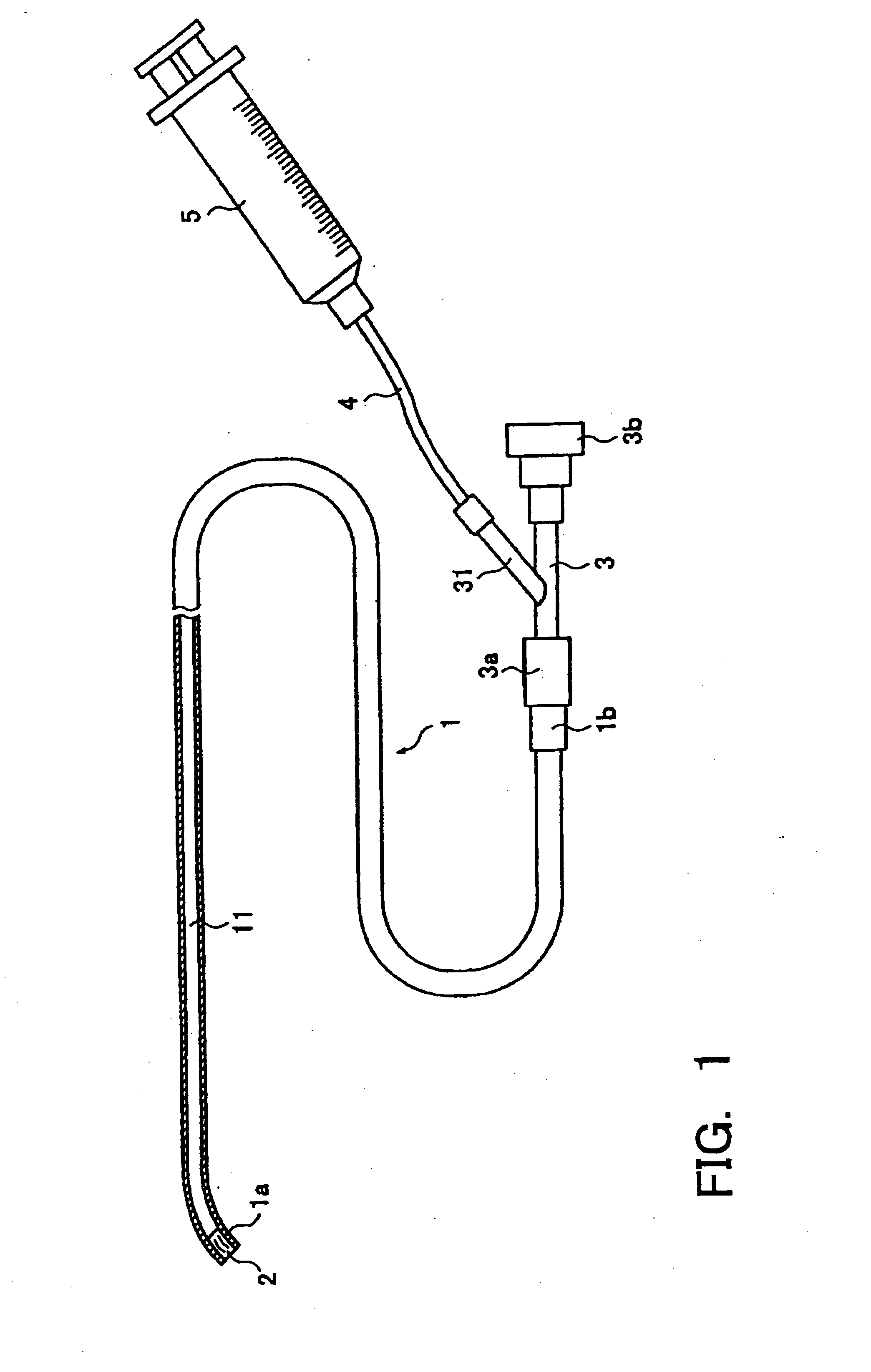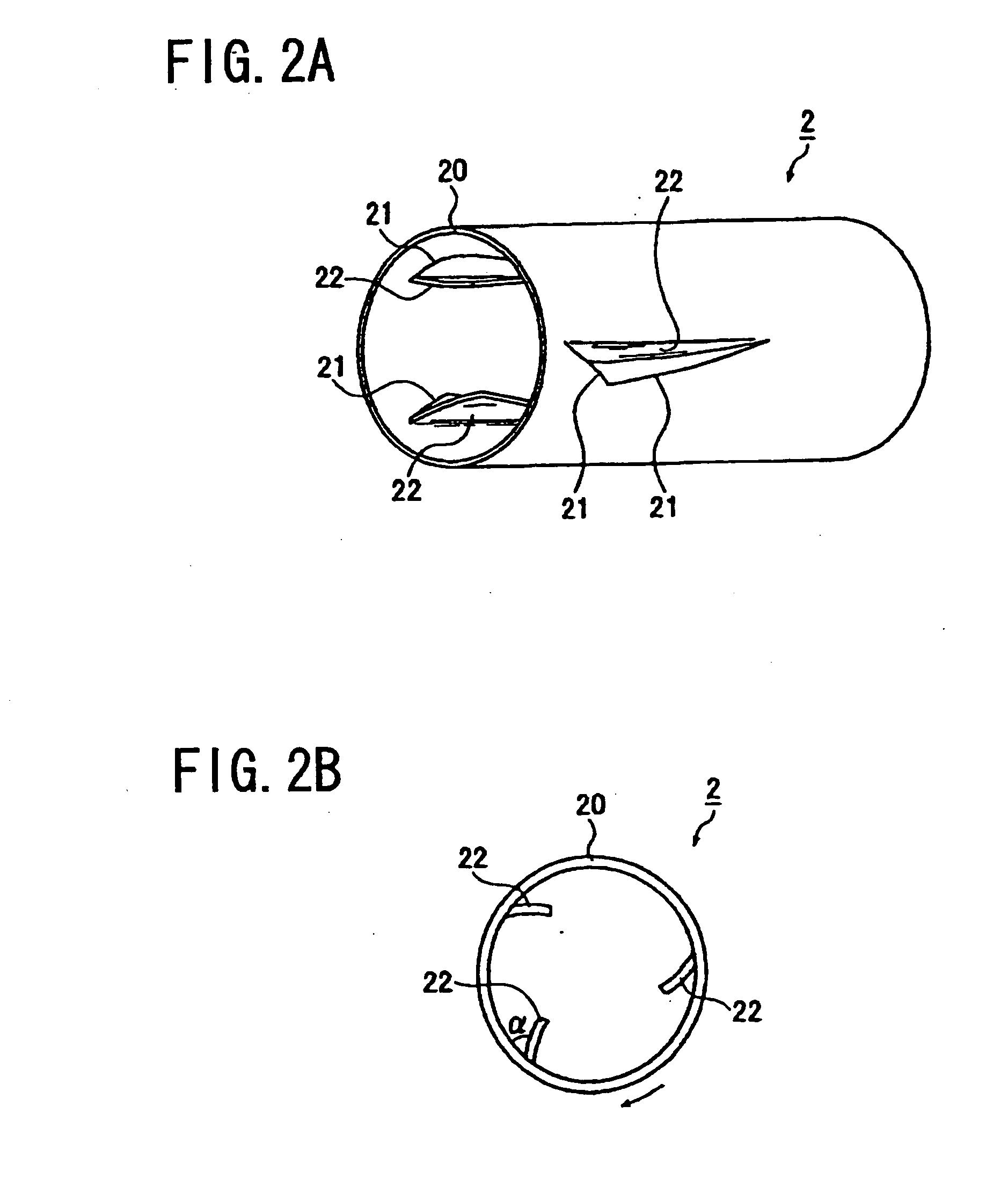Thrombectomy catheter
a catheter and thrombosis technology, applied in the field of catheters, can solve the problems of ischemia, thrombosis, and excessive negative pressure in the blood vessel, and achieve the effects of reducing the cross-sectional area of the lumen, increasing the rigidity of the catheter, and limiting the range of blood vessels
- Summary
- Abstract
- Description
- Claims
- Application Information
AI Technical Summary
Benefits of technology
Problems solved by technology
Method used
Image
Examples
Embodiment Construction
[0052] Referring to FIG. 1, an aspiration thrombectomy catheter assembly according to one illustrated and disclosed embodiment includes a flexible elongate catheter tube 1 having a lumen 11 defined therein. The lumen 11 has a circular cross-sectional shape. The thrombectomy catheter assembly also includes a catheter hub 1b mounted on the proximal end of the catheter tube 1, a Y-shaped connector 3 connected to the catheter hub 1b at the distal end 3a and a suction device (e.g., a syringe) 5 connected to a branch 31 of the Y-shaped connector 3 via a joint tube 4.
[0053] When the catheter tube 1 is inserted into a blood vessel, the end of the catheter tube 1 which is first introduced into the blood vessel is referred to as a distal end, and the other end of the catheter tube 1 as a proximal end. Elements other than the catheter tube 1 of the thrombectomy catheter assembly will also have distal and proximal ends defined according to the positional relationship between the distal and pro...
PUM
 Login to View More
Login to View More Abstract
Description
Claims
Application Information
 Login to View More
Login to View More - R&D
- Intellectual Property
- Life Sciences
- Materials
- Tech Scout
- Unparalleled Data Quality
- Higher Quality Content
- 60% Fewer Hallucinations
Browse by: Latest US Patents, China's latest patents, Technical Efficacy Thesaurus, Application Domain, Technology Topic, Popular Technical Reports.
© 2025 PatSnap. All rights reserved.Legal|Privacy policy|Modern Slavery Act Transparency Statement|Sitemap|About US| Contact US: help@patsnap.com



